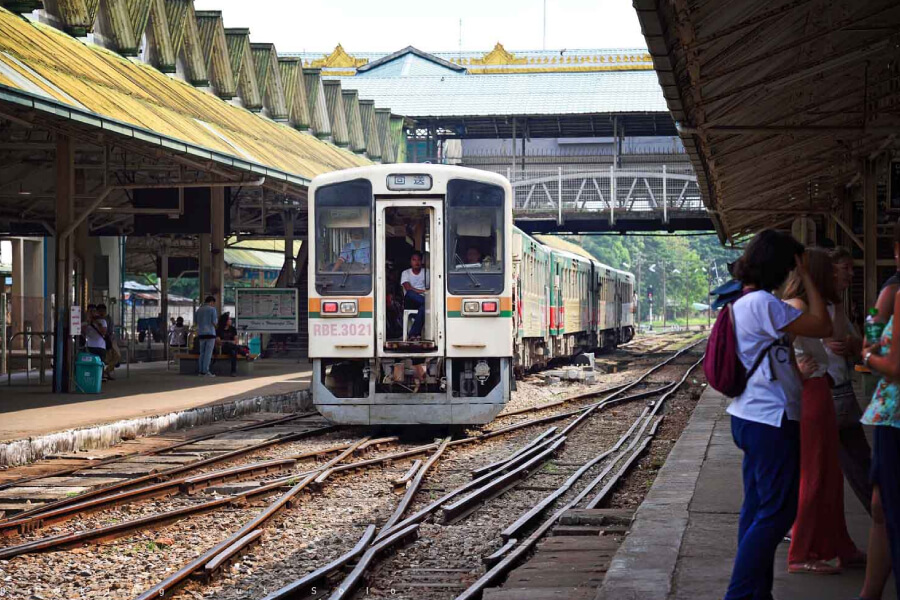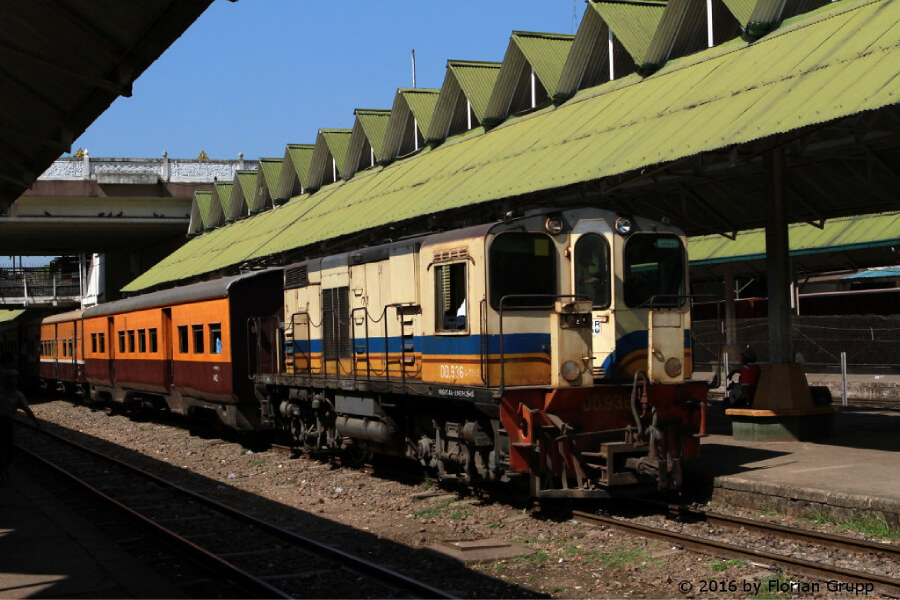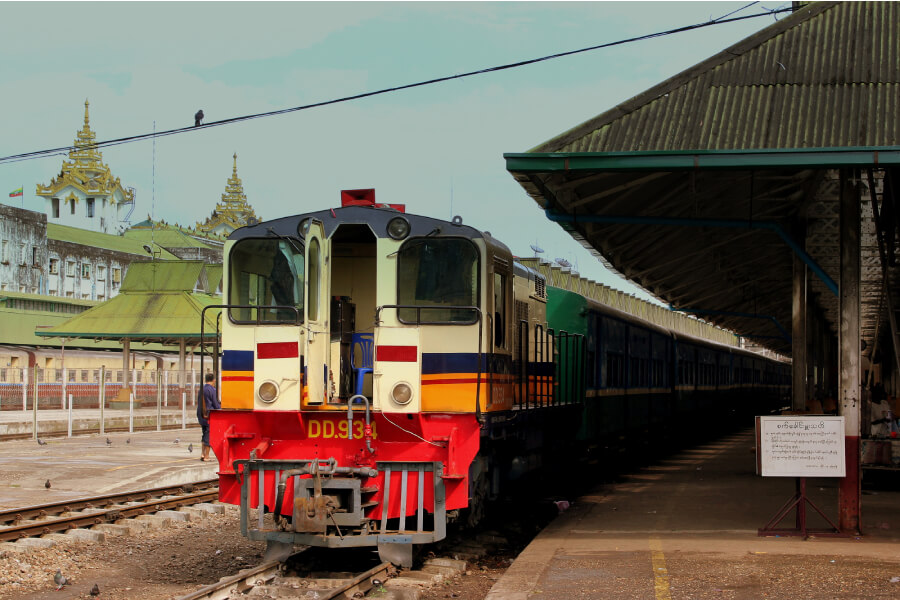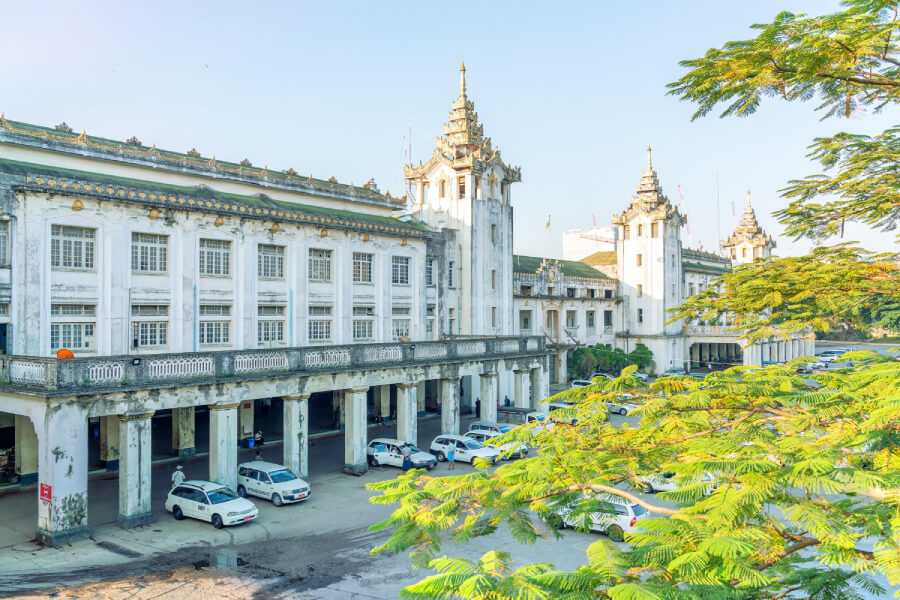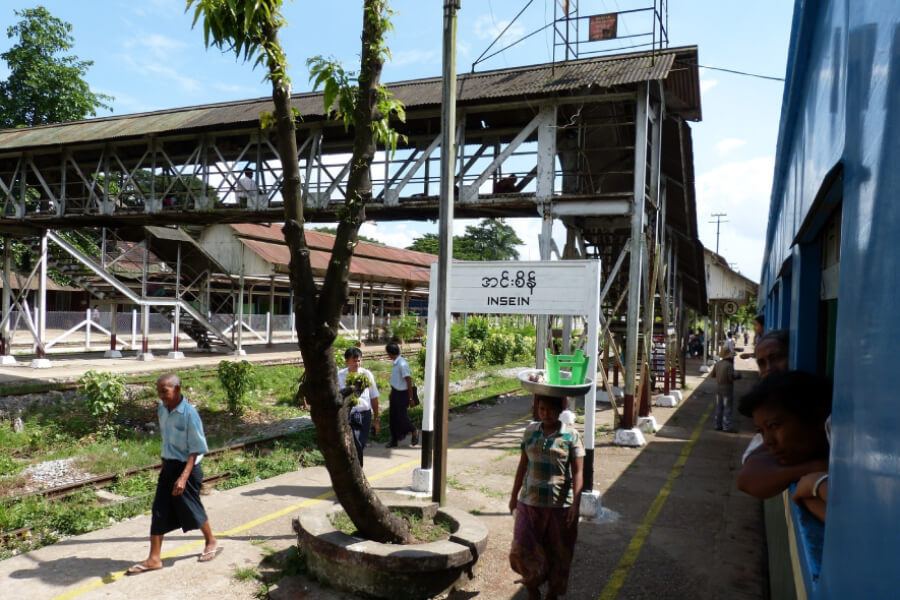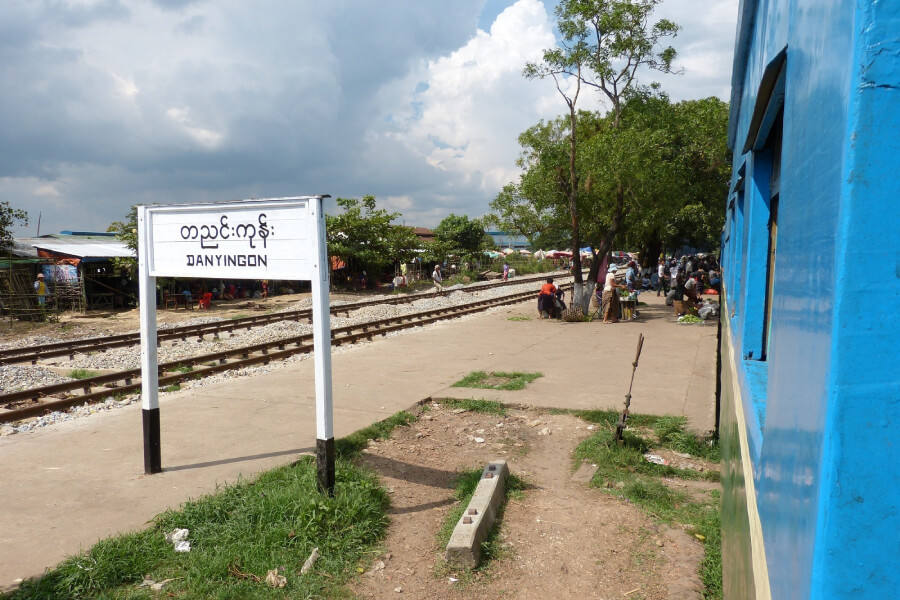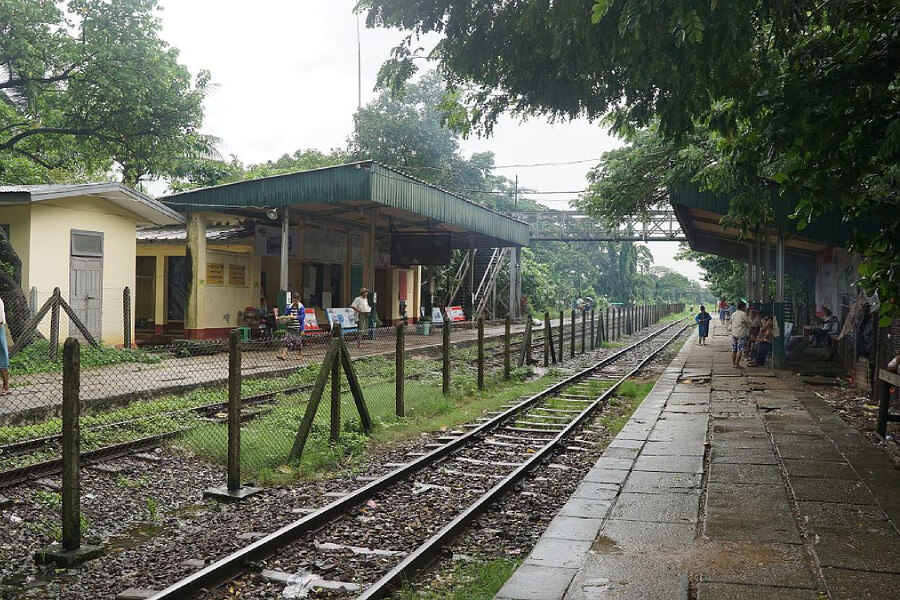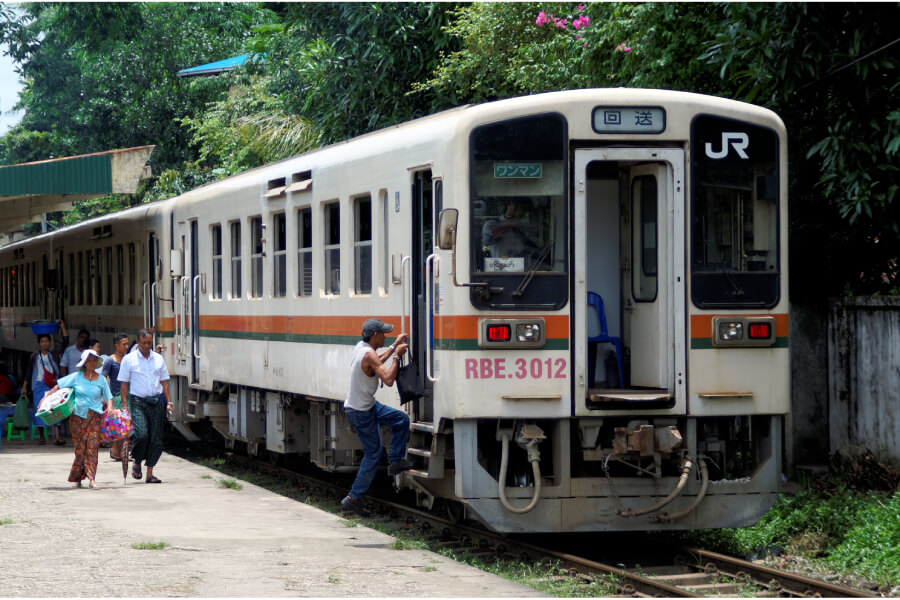When it comes to experiencing the heart of Yangon, there's no better way than hopping aboard the Yangon Circular Train. This iconic railway journey takes you on a mesmerizing ride through the city, passing through seven unique stops, each offering its own set of amazing sights and cultural treasures. If you're looking for an unforgettable adventure during your Myanmar tours, the Yangon Circular Train is an absolute must-experience.
A Glimpse of Local Life in Yangon Circular Train
Travel, at its heart, is a journey of exploration and discovery. While tourists often flock to the iconic landmarks and breathtaking landscapes, there's a richer layer of travel known as "A Glimpse of Local Life." This is the art of stepping off the beaten path, connecting with local culture, and immersing oneself in the heartbeat of daily existence. It's a journey within the journey, and it's a quintessential aspect of the travel experience.
The Yangon Circular Train in Myanmar provides an extraordinary platform for this immersive journey. Rather than being merely a mode of transportation, it's a cultural tapestry that unfolds as you traverse the circular route. The train, often referred to as "the slow train," provides a unique and authentic lens into the daily lives of the Burmese people.
One of the most rewarding aspects of the Yangon Circular Train is the opportunity to connect with the locals. As you step into the train's carriages, you're embraced by the diversity of Burmese society. Monks, street vendors, fellow travelers, and commuters become your fellow passengers. In this communal space, conversations naturally unfold, transcending language barriers. It's through these exchanges that you begin to grasp the cultural tapestry of Yangon. Stories are shared, questions are asked, and a sense of shared humanity prevails.
The train's journey takes you through not only urban areas but also the suburban and rural landscapes surrounding Yangon. At each stop, you're presented with the real-life vignettes of the city's diverse neighborhoods. Among these stops, Insein is particularly noteworthy. Here, a lively local market presents a vibrant palette of Burmese life, featuring fresh produce, street food, and handmade crafts. It's a sensory delight and a window into the daily rhythms of the city.
In addition to exploring markets and neighborhoods, the Yangon Circular Train provides an opportunity to engage in local traditions. Whether it's witnessing Buddhist monks receiving alms at a station, observing local ceremonies, or partaking in communal activities, these moments connect you with the rituals and practices that define the local culture. They offer a glimpse into the heart and spirit of the community.
Cuisine is an integral part of any culture, and Burmese cuisine is a treasure trove of flavors. Along the train's route, vendors frequently hop on and off, offering a diverse array of authentic Burmese street food. The flavors are tantalizing, from savory samosas to sweet jaggery treats. Trying these local delicacies isn't just a culinary experience; it's an insight into the heritage and traditions that have shaped Burmese gastronomy.
For those with a keen eye, the Yangon Circular Train is also a photographic journey. Candid shots of people going about their daily routines, the vibrant markets, and the bustling streets are moments that can be captured and cherished. These images become lasting memories, encapsulating the essence of local life.
To make the most of this immersive journey, it's essential to approach it with respect and an open mind. Learning a few local phrases can break the ice and enhance your interactions. Traveling slowly, without rushing from one attraction to the next, allows time for spontaneous encounters. Respect for local customs and traditions is paramount, and an open-minded approach to new experiences can lead to some of the most enriching moments in your travel.
7 Remarkable Stops on the Yangon Circular Train
1. Yangon Central Station
This point of embarkation is none other than Yangon Central Station, an enduring testament to Myanmar's colonial past and a treasure trove of architectural wonders.
Built in 1877, Yangon Central Station has transcended its utilitarian purpose to become a veritable museum of history and culture. It stands as a living testament to the country's colonial period, an era when British influence permeated the region. The station's architecture beautifully fuses Victorian and Burmese design elements, creating an aesthetic that is as unique as it is captivating.
Stepping onto the platform at Yangon Central Station is akin to stepping into a time machine, with each architectural detail and feature holding a story waiting to be shared. The arched windows, the ornate ironwork, and the grand clock tower beckon travelers to delve into the stories of a bygone era. As one explores the station, the grand vaulted ceiling casts a spell, evoking a sense of grandeur that was the norm during the colonial period.
The platform at Yangon Central Station is a photographer's delight. The sweeping roof, supported by majestic archways, creates an atmosphere that is not only picturesque but also steeped in history. Visitors find themselves capturing the station's timeless beauty in photographs that they'll cherish for years to come.
But Yangon Central Station is not merely an architectural gem; it's the starting point of an adventure. As travelers witness the train's departure, their anticipation builds. The architectural splendor of the station gradually gives way to the scenic wonders that await them on the Yangon Circular Train route. The station acts as a portal that ushers passengers into a journey through time, culture, and beauty.
2. Insein Station
As the Yangon Circular Train chugs along its meandering route, one particular stop emerges as a vibrant and captivating destination that encapsulates the spirit of Myanmar's daily life. Insein Station, nestled in the heart of this bustling neighborhood, beckons travelers with a lively local market, offering a sensory delight that provides a unique glimpse into the bustling lives of the city's residents.
Insein Station is far from being just another train stop; it serves as a portal to a dynamic marketplace where the rich tapestry of Burmese culture comes to life. The moment one steps off the train, an explosion of colors, sounds, and scents engulfs the senses. It's as if all of Myanmar's culture and commerce have converged in this energetic market.
At the heart of Insein Station's market lies a cornucopia of fresh produce. Here, one can revel in a kaleidoscope of fruits, vegetables, and herbs, each sourced locally and bursting with flavors. The stalls are meticulously arranged, displaying exotic fruits and vegetables that are emblematic of the region's rich agricultural heritage.
Yet, Insein Station is not solely a haven for food enthusiasts. It also doubles as a treasure trove of handicrafts and artisanal creations. Local artisans proudly display their handwoven textiles and intricately designed jewelry, providing visitors with an array of products that showcases the craftsmanship and artistic talent of the region. Whether you're in search of souvenirs or simply wish to admire the artistry, this market is a perfect destination.
One of the highlights of Insein Station's market experience is the tantalizing street food. The stalls offer an enticing array of local delicacies, from piping hot samosas to sizzling skewers of meat. The aromas that waft through the air are nothing short of intoxicating, and the flavors are a delightful revelation. For travelers, this is a golden opportunity to savor Burmese cuisine in its most authentic form.
Beyond the market's array of products, Insein Station is a living, breathing reflection of daily life in Yangon. As one strolls through the bustling stalls, it's impossible not to become an observer of the lively interactions between locals, each immersed in their daily routines. The market is where the heartbeat of the community resonates, where the essence of Burmese life is on full display.
Sampling the local street food is more than just a recommendation; it's an integral part of the Insein Station experience. Travelers should relish the opportunity to taste new flavors and savor the authentic cuisine of Myanmar.
3. Mingaladon Station
Mingaladon Market Station isn't your average train stop. It's a dynamic hub where the soul of the nation's traditions harmoniously coexists with the buzz of commerce. Stepping off the train, visitors are greeted with a sensory spectacle. The market is an explosion of colors, sounds, and fragrances, serving as a living testament to Myanmar's cultural diversity.
Here, locals and travelers alike can relish in the abundance of fruits, vegetables, and herbs. Each item on display tells a story of Myanmar's agricultural heritage, reflecting the country's strong connection to its land and its bounty.
It's also a showcase of local craftsmanship and artistry. Skilled artisans exhibit their creations, from meticulously woven textiles to intricately designed jewelry. Visitors have the opportunity to appreciate the skill and creativity of Myanmar's local talents.
Sizzling skewers of meats, mouthwatering snacks, and delightful delicacies await those who are willing to explore the diverse and tantalizing flavors that define Burmese street cuisine. The aromas wafting through the air are nothing short of irresistible.
If you navigate through the vibrant market, you'll witness more than just the exchange of goods. The interactions between local vendors and customers paint a vivid picture of community bonds and the shared rituals that shape everyday life. Mingaladon Market Station is not merely a marketplace; it's a living, breathing representation of Myanmar's spirit and a testament to its cultural mosaic.
4. Danyingon Station
Danyingon Railway Station's historical significance is deeply entwined with Yangon's development as a city and its colonial past. Constructed during the British colonial period, this station bears the architectural and infrastructural hallmarks of that era. Its enduring presence stands as a testament to Yangon's historical narrative and colonial heritage.
This market comes to life every day, drawing in a diverse array of vendors and shoppers. Local residents and visitors can immerse themselves in the vibrant colors, tantalizing aromas, and exquisite flavors of traditional Myanmar street food. The market not only offers an array of goods, from fresh produce to handicrafts, but it also serves as a lively space for cultural exchange and interaction.
The station serves as a convergence point for people from various walks of life, ethnicities, and backgrounds, creating a dynamic blend of cultures and traditions. Observing the flurry of passengers, whether they are rushing to catch a train or leisurely enjoying a meal at the market, provides a genuine insight into the multifaceted tapestry of Yangon's social fabric.
5. Taikkyi Station
Paywetseikkon Railway Station, a charming and unassuming stop along the Yangon Circular Train route, hides a world of natural beauty and adventure just beyond its platform. Situated within easy reach of Yangon, Myanmar, this station serves as a portal to the enchanting Hlawga National Park.
Tucked away in the serene outskirts of Yangon, Paywetseikkon Railway Station holds a special place along the Yangon Circular Train route. It acts as a bridge between the city's urban vibrancy and the natural tranquility of Hlawga National Park, providing travelers with a unique opportunity to escape the urban rush and embrace nature's serenity.
Hlawga National Park, a sprawling sanctuary spanning over 800 acres, is the highlight of the journey from Paywetseikkon Railway Station. This park beckons visitors with its lush forests, tranquil lakes, and abundant wildlife. It offers a diverse range of activities and experiences for nature enthusiasts.
The park is home to a variety of wildlife, making it a delight for wildlife enthusiasts and birdwatchers. As you explore its winding trails and pristine water bodies, you may encounter various species of birds, deer, and even playful monkeys.
Families, in particular, will appreciate the educational and leisure activities available in the park. Children can learn about the native flora and fauna through guided tours and educational displays. Picnic spots and camping facilities provide opportunities for quality family time in the heart of nature.
6. Okkalapa Station
Okkalapa Station is a bridge that connects the bustling heart of Yangon with its more tranquil suburban areas. It serves as a point of transition, where passengers disembark to find themselves in a district that embodies both modernity and tradition. The character of Okkalapa is multifaceted, capturing the essence of Yangon's evolution.
The district of Okkalapa is replete with attractions waiting to be explored. One of the prominent landmarks is the revered Botataung Pagoda, a site of deep spiritual significance and architectural splendor. This pagoda, which houses a sacred hair relic of the Buddha, is an embodiment of Myanmar's rich religious heritage. Visitors have the opportunity to immerse themselves in the spiritual ambiance and admire the intricate architecture that adorns this place of worship.
The streets are teeming with vendors selling everything from fresh produce to handicrafts. These bustling markets provide an authentic taste of daily life in Yangon. Travelers can engage with locals, savor local delicacies, and explore the rich tapestry of Burmese culture.
In Okkalapa, you'll find cultural encounters around every corner. It's a district where people go about their daily routines, where traditional customs and modernity coexist seamlessly. Whether it's watching artisans create intricate handicrafts or enjoying a meal at a street-side eatery, Okkalapa Station offers an immersion into the pulse of local life.
Yangon Circular Train: Practical Information
- Ticketing: Tickets are affordable, and there's no need to book in advance. Simply arrive at Yangon Central Station, purchase your ticket, and embark on your adventure.
- Duration: The full circular journey takes approximately three hours. You can hop on or off at any station along the way, so you have flexibility in how long you'd like to explore.
- Best Time to Go: The train operates daily, so you can choose a time that suits your schedule. However, the early morning train is a great way to avoid the midday heat.

